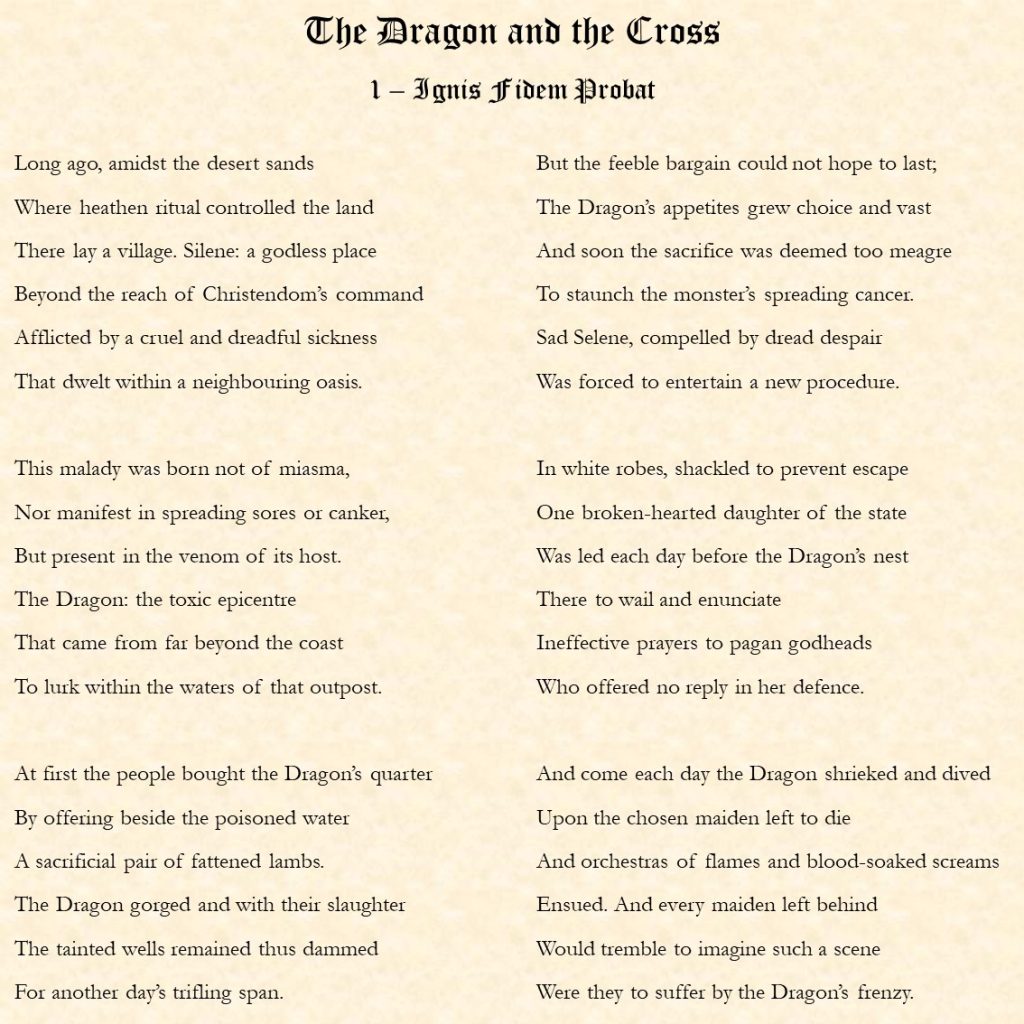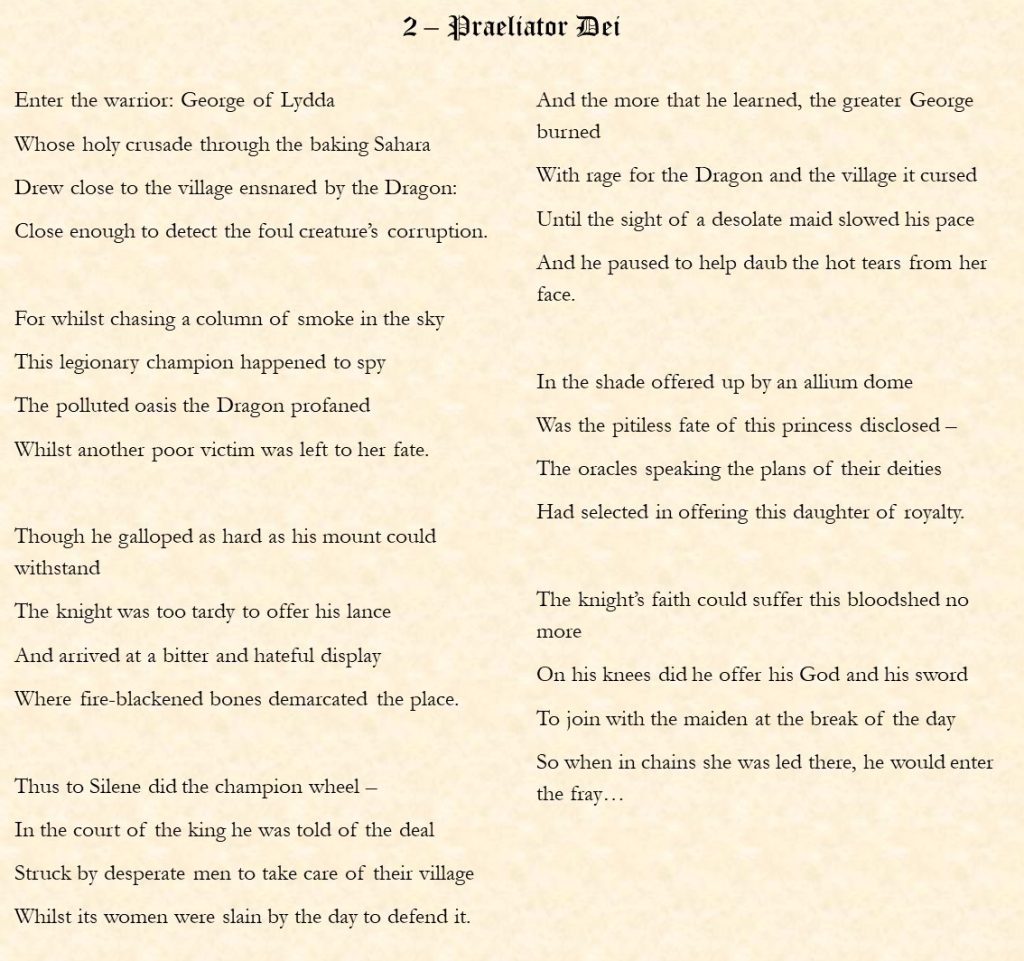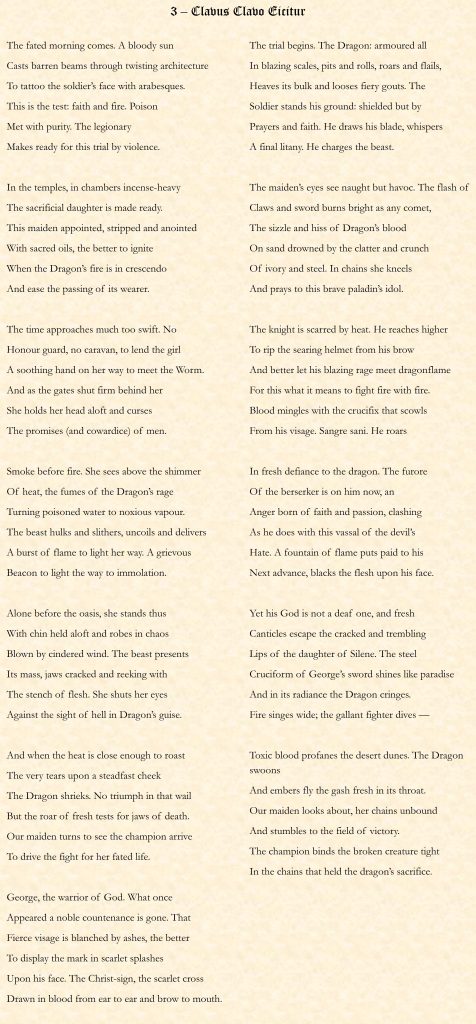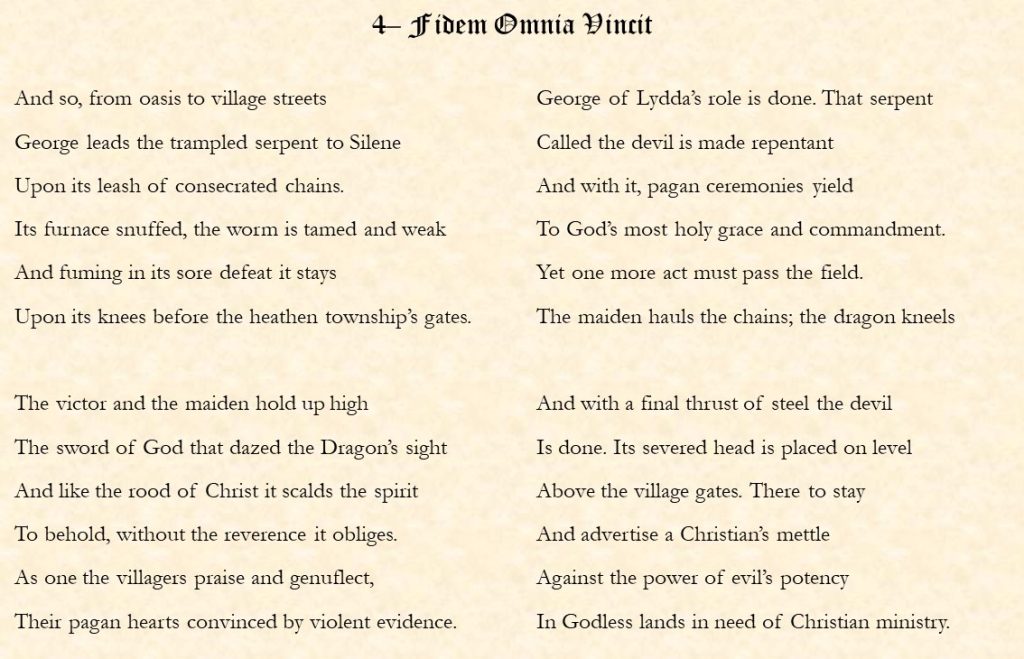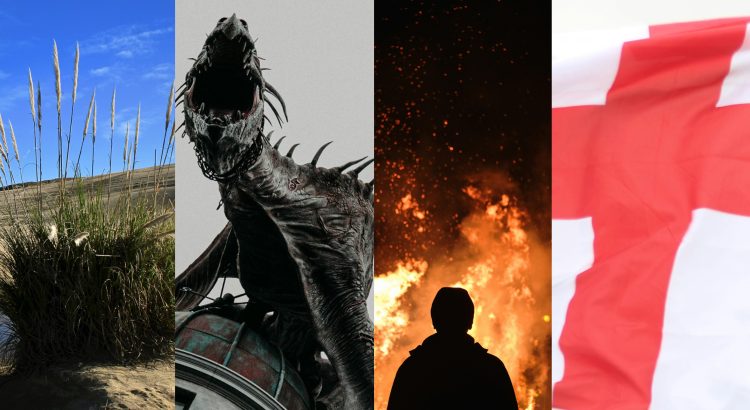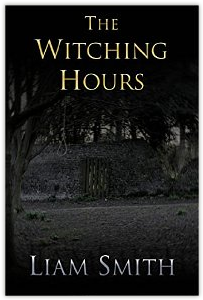A couple of years ago, I started writing a St. George’s Day poem. I had this idea, see — well, more of an image, in my head. I’d seen a billboard with an England fan’s face on it. White greasepaint, red cross, as solemn as if his life depended on the match. Who knows, maybe it did. I don’t have much truck for football myself, but it did spark an idea in me. Rather than St. George a chivalrous knight, why not St. George a berserker, a raging, painted warrior fighting for his faith against his hellish opponent? I could write about that.
If you’re still reading you’re probably not a football fan. Good on you. Opium of the masses and so on. That image of George the berserker stayed in my head for years until, after completing my PGCE, I found myself with some time to write. Not necessarily to plan and write any extended prose, but enough to throw some words and phrases down and call it a poem. Which I did. I got about halfway through, took an extended break, returned to it a year later, stalled, took a break, returned to it this year and… The Dragon and the Cross, a St. George’s poem in four, ecclesiastic Latinate parts.
I didn’t get caught up in too much historical accuracy – you know the story’s got a dragon, right? But I took pieces of varying tales and legends and used the bits I liked best, adding my own detail or glossing over parts that wouldn’t translate so well to verse. As with most poetry I write, it’s in meter. Parts 1 and 4 use a rhyme scheme I came up with and use fairly frequently for longer pieces. George’s fight with the Dragon is in free verse though, to echo the chaos of combat. I was inspired by Shakespeare’s Henry V for the final part. All that patriotism, but channelled into pride in faith instead. The real George of Lydda wasn’t even English, of course.
Read on, enjoy, and let me know what you think of The Dragon and the Cross in the comments.
